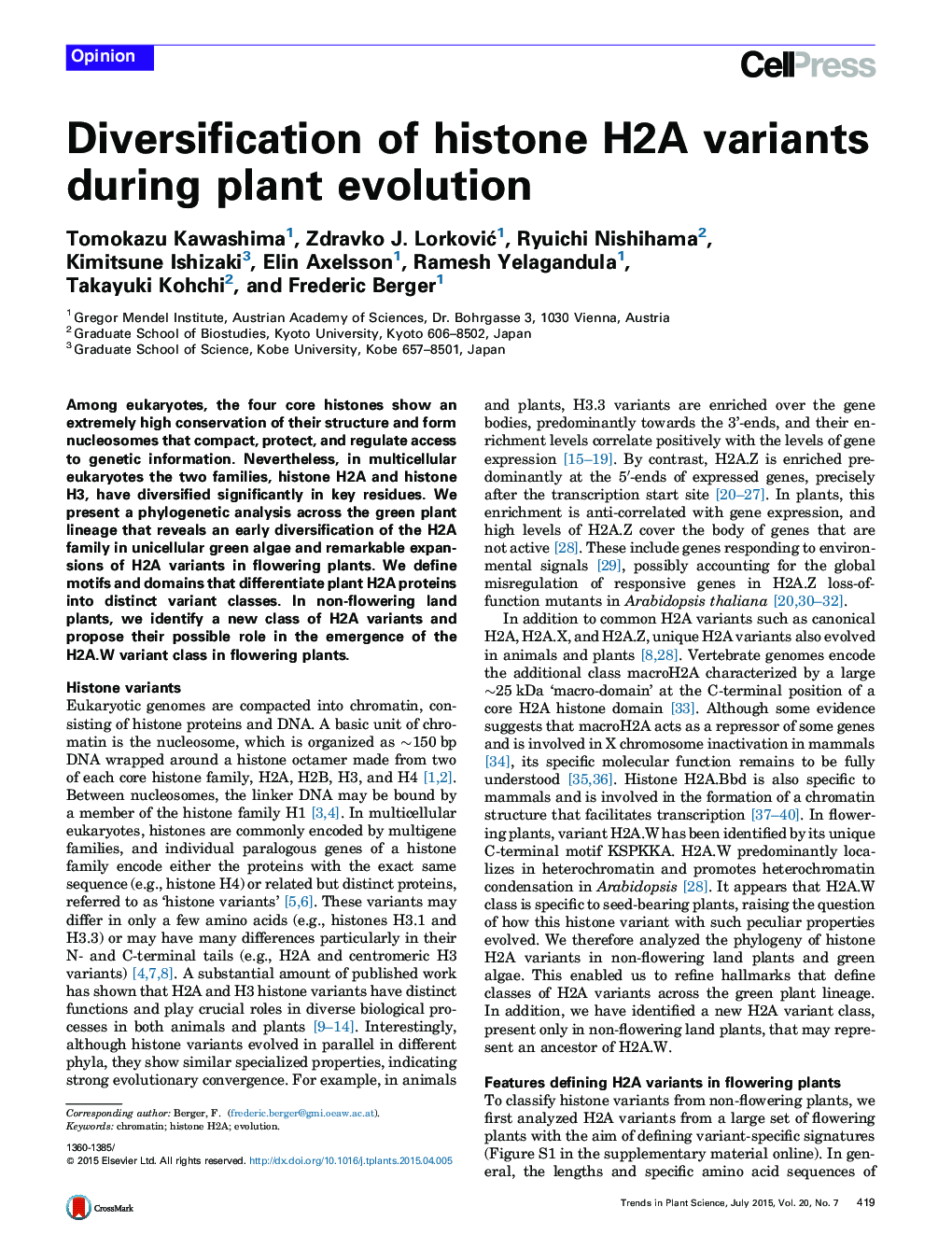| Article ID | Journal | Published Year | Pages | File Type |
|---|---|---|---|---|
| 2825875 | Trends in Plant Science | 2015 | 7 Pages |
•Flowering plants have evolved a large array of unusual histone variants.•Three major features categorize H2A histones into distinct variant classes.•Canonical H2A and H2A.X diverged already in green algae.•Additional diversification of H2A.X took place gradually during land plant evolution.•In addition to H2A.Z and H2A.X, the land plant ancestors evolved two variant classes H2A.M and H2A.W.
Among eukaryotes, the four core histones show an extremely high conservation of their structure and form nucleosomes that compact, protect, and regulate access to genetic information. Nevertheless, in multicellular eukaryotes the two families, histone H2A and histone H3, have diversified significantly in key residues. We present a phylogenetic analysis across the green plant lineage that reveals an early diversification of the H2A family in unicellular green algae and remarkable expansions of H2A variants in flowering plants. We define motifs and domains that differentiate plant H2A proteins into distinct variant classes. In non-flowering land plants, we identify a new class of H2A variants and propose their possible role in the emergence of the H2A.W variant class in flowering plants.
